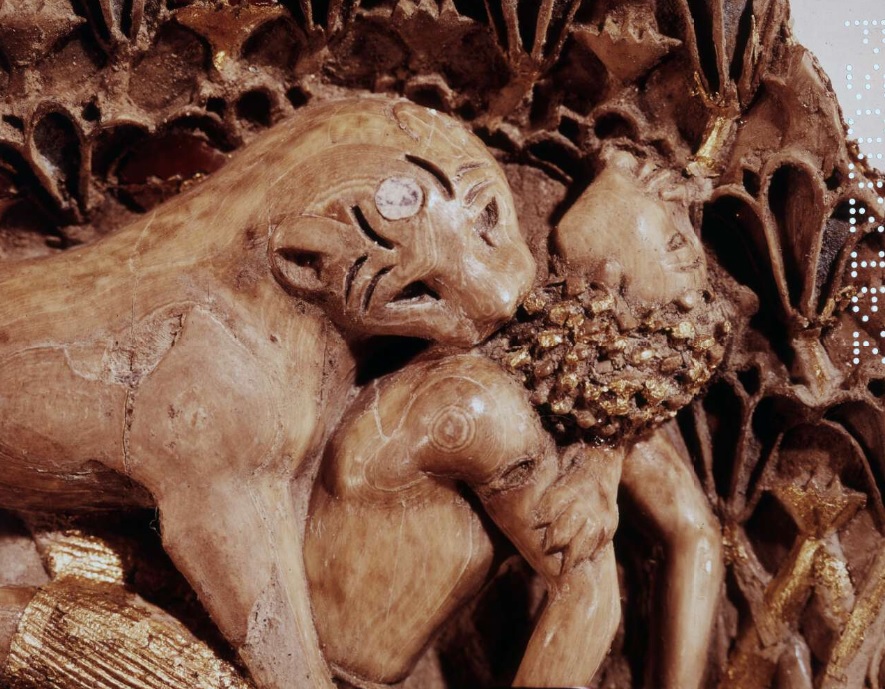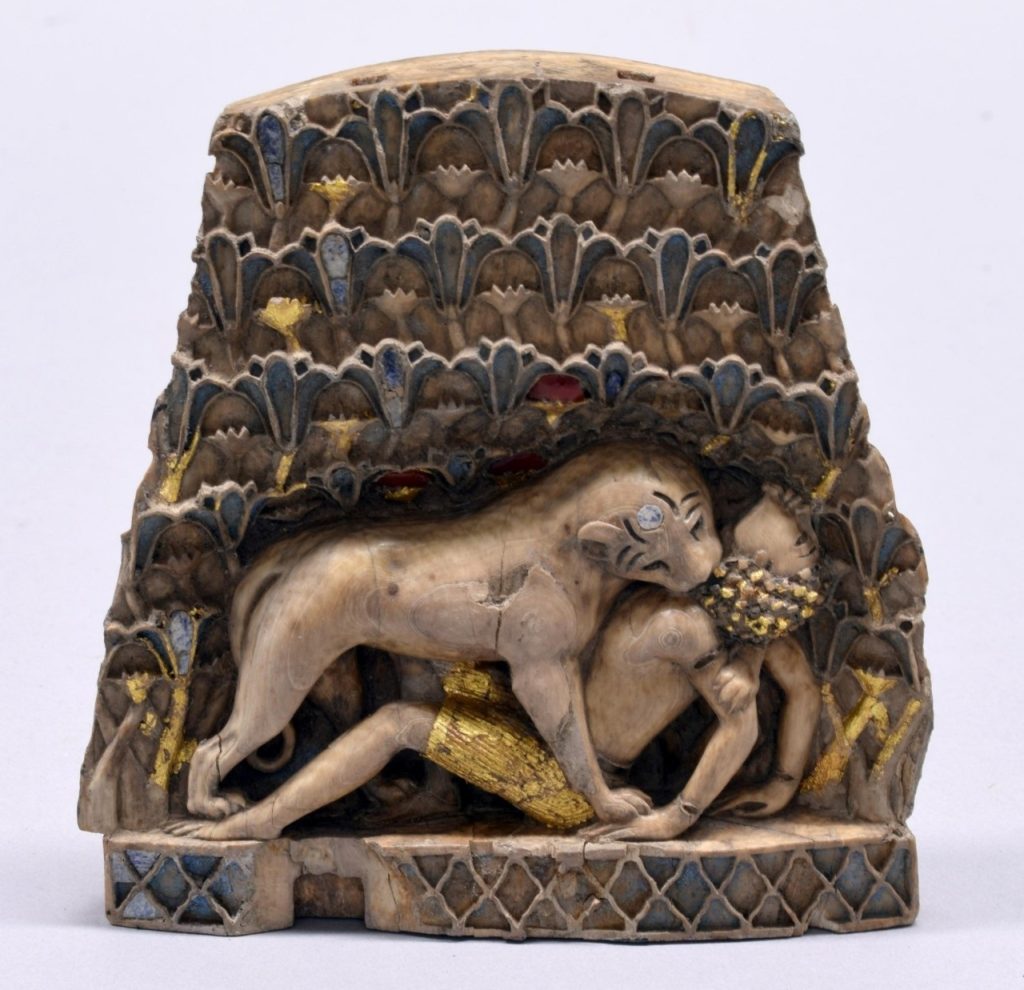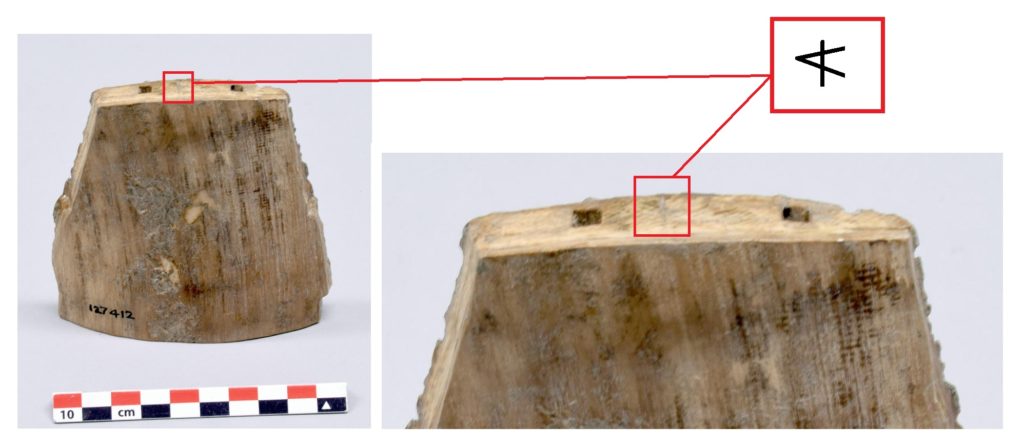

[14] For I am as a lion to Aparaym, and as a young lion to the house of Ya’ohdah. I, Me, I will tear apart and I will go away. I will lift up and there is no deliverer.
[15] I will go away that I may return unto my place, until which they will bare guilt. Then they will seek my face. In their distress will they most definitely break forth to me early.
The prophet Hoshai (Hosea) warned the kingdom of Aparaym (Ephraim), which was the ELEVEN(!) tribes that defected from the house of Doayd in Ya’ohdah (1 Kings 11:32; 2 Kings 17:18), that it would be brought down and destroyed by the Neo-Assyrians who would take them captive to Assyria. The prophecy was fulfilled historically in three stages.
It began unfolding during the western campaigns of the Assyrian king Adad-nirari III (810-783 BCE) and his queen-mother Semiramis which brought down the kingdom of Aparaym and terminated the reign of King Yarab-gham II (Jeroboam II – 834-794 BCE) in 794 BCE. The prophet Ghamos (Amos) also warned that this would happen to the kingdom of Aparaym and to King Yarab-gham II (Amos 7:11). The kingdom was restored in 771 BCE by Zachar-Ya’oh, son of Yarab-gham II, following a 23-year interregnum.
Then came the western campaigns of Pul/Tiglath-pileser III (745-727 BCE) who invaded the kingdom of Aparaym in the time of King Pakakh (757-737 BCE). Tiglath-pileser III took the tribes of Napathalay (Naphtali), Gad, Ra’oban, and half of Manashah into captivity (2 Kings 15:29; 2 Chronicles 5:26). King Pakakh managed to avoid being captured at his capital of Shamaron (Samaria), but he was betrayed and assassinated by the Assyrian loyalist Hoshai in 737 BCE (2 Kings 15:30). Hoshai assumed power in Shamaron at this time, but he was more of a provincial governor rather than an independent ruler in his own right. However, Tiglath-pileser III granted Hoshai full kingship eight years later in 729 BCE.
After the death of Tiglath-pileser III in 727 BCE, Hoshai rebelled against Tiglath-pileser III’s son and successor Shalmaneser V (727-722 BCE). The kingdom of Aparaym was destroyed once and for all in 722 BCE following a three-year siege of the capital Shamaron during Shalmaneser V’s western campaigns (2 Kings 17:1-6). Note that the next Assyrian monarch, i.e. Sargon II (721-705 BCE), did not conquer Shamaron and deport our remaining tribes to Assyria. This erroneous view is championed mostly by modern critics of the bible who want the book to be inaccurate. Sargon II destroyed Samerina in Lebanon at the beginning of his reign, not Shamaron in Ya’oh-shar-al. What Sargon II did was move alien strangers into our land.
Thus, the house of Aparaym suffered three invasions by the Assyrians and the third invasion by Shalmaneser V was the one that put the nail in the coffin.
The artifact shown at the top of this article and down below is one that has intrigued me since I first saw pictures of it in bible archaeology magazines when I was still a kid. The item, an ivory plaque, was found by Professor Sir Max Edgar Lucien Mallowan in the 20th century at the site of the Assyrian royal palace of Nimrud. The plaque depicts a lioness in the act of mauling a young negro man. The lioness is standing over her victim who has his knees drawn up and is lying back supported by his hands on the ground behind him. The lioness is biting into the young man’s throat. The youth wears a short kilt gilded with gold leaf. The tight curls of his nappy afro hair are depicted by ivory pegs which have been gilded with gold leaf. In the background are lotus and papyrus flowers, covered in gold leaf and inlaid with lapis lazuli and cornelian. You can also see that there is a spot of lapis lazuli inlay on the forehead of the lioness.
The ivory carving is a truly masterful work of art.
But why was it made and what was it meant to signify?

Although the object was found in the ruins of the North West Palace in Assyria, the scene on the item is that of Matsraym (Egypt). We can determine this from the lotus and papyrus flowers which were produced exclusively in ancient Matsraym.
The curators of the British Museum where the ivory plaque is now being housed under the museum number 127412 tell us that the youth being mauled by the lioness is an “African.” The problem with this description, of course, is that absolutely no one was being called, or was even calling themselves, an “African” when this ivory plaque was carved and gilded sometime between the end of the 10th and the end of the 7th century BCE. There were no “Africans” then.
Let’s be brutally candid. If you look really close, the youth on the ivory plaque has the distinctive facial profile of a Matsray (an Egyptian). Even the gilding and inlaying technique screams Matsray manufacture. Yet it is unlikely that the artist was attempting to depict the mauling of a Matsray youth in the land of Matsraym. I am not saying that as some kind of an endorsement of the eurocentric lie that the ancient Matsray were not black people. Oh yes the hell they were. On the contrary, I am saying that for two different reasons.
Number one, because the most likely candidate for the artisan who could have depicted what clearly looks like the profile of a Matsray youth, so familiar to us from a plethora of artwork produced in ancient Matsraym, would have to be a Matsray man himself, presumably an artisan from Matsraym who had been taken captive to Assyria. Number two, at the top and at the bottom of the ivory plaque we find the letter commonly called “aleph” inscribed. There is one incised on the top, and two incised on the bottom.

The British Museum classifies the script as being “West Semitic” and the language of the script as being “Phoenician”. Fair enough. The script is not the unique Ghabarayth script which is the precursor to the Phoenician-Canaanite alphabetic script, but let’s cut to the chase. The Matsray artisan working in ancient Assyria, and depicting what looks like a Matsray male youth as accurately and as skillfully as any native Matsray artisan could, he made this item, evidently a piece of lost furniture, at the request of his Assyrian lords and inscribed it with the first letter of the paleo Hebrew alphabetic script because the youth being mauled by the lioness is actually a Ghabaray (Hebrew) from the kingdom of Aparaym. The people of Ya’oh-shar-al and the people of Matsraym were virtually indistinguishable in terms of their racial features. So this should come as no surprise.
The three letters incised on the ivory plaque are initials that all stand for A(PRYM) = “Aparaym” (Ephraim) and there are three of the same letter because the Assyrians conquered the kingdom of Aparaym on three separate military campaigns to the west and took all of its eleven tribes into captivity: Aparaym, Gad, Manashah, Ra’oban, Shamaion, Zabalon, Yashshachar, Dan, Ashar, Napathalay, and all the Ban-yamayn (Benjamin) who were living within their own tribal territory and not the Ban-yamayn living within the territory of Ya’ohdah (Judah) who remained loyal to the house of Doayd.
Lastly, the mauled victim is gilded with gold in his afro and on his kilt because he was royalty. He was clearly a somebody not a nobody. He was a young male captive from the royal family in Ya’oh-shar-al whom the Assyrians subsequently fed to one of their hungry lions. The kings of Assyria spared no expense to gloat and boast over the peoples they conquered, displaying their victories and the gruesome torture of their captives on the walls of their palaces, and even it would seem on their very expensive furniture and costly furniture-fittings.
When the Maker of heaven and earth threatened His people via His prophet Hoshai that He would be as a lion to Aparaym (Hoshai 5:14) He wasn’t joking. He didn’t just mean He would destroy the kingdom of Aparaym as a lion would when it rips apart its prey. He meant the people would literally become food for lions within their enemy’s lands.
None of the 12 tribes of Ya’oh-shar-al plus Loay (Levi) were ever lost. They were deliberately hidden by their Maker until the time of their distress would reach its conclusion and then His people would break forth like the dawn’s light and search for Him eagerly and vehemently. Then their hidden identity would come to the light and be revealed. Only one people on this whole earth fit this description and that is the people who descend from the survivors of the infamous middle passage. They didn’t come to the shores of America as immigrants. They came as slaves. They are the only people who were chattel slaves in the Americas. As for everyone else, if they were slaves at one point in the Americas, it was only a temporary indentured servitude. For us it became permanent cradle to the grave slavery.
Therefore, unless the Americas are not those places where the nation of Ya’oh-shar-al would be scattered by the fury and wrath of their Maker, then the only so-called “Israelites” in the Americas are the people who were brought there by slave ships. The so-called Jews, the natives of America, the Europeans, etc., none of them were dragged across the ocean to the shores of the Americas in chains. They all came as freemen. Only middle passage people (OMPP) were brought forcibly. Their Rock is the one who did this to them in His fierce anger as a raging lion, and now they are seeking Him eagerly and aggressively in their distress just as He said they would centuries before it happened! Their Rock has a name.
His name is YA’OH
Always has been. Always will be.
#EXODUS2023
1.15.7252 (April 5, 2023)
